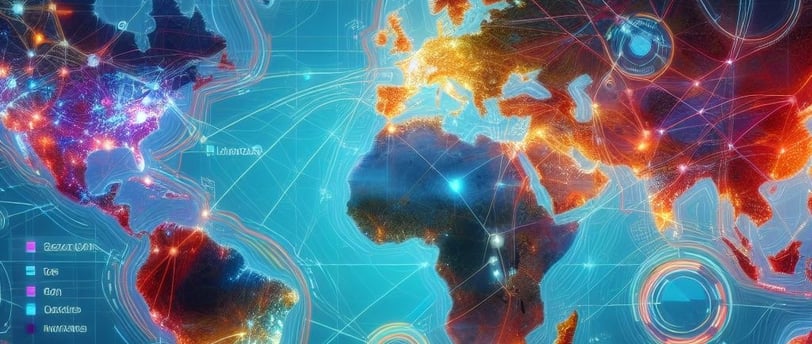StingrayLink: Supply Chain 2030 -- Navigating the Future of Logistics and Operations
It is 2030, what is happening?
Omar Rebaza
1/18/20242 min read


2030 will be here before we know it, but what are we thinking in 2024 that could happen then? The supply chain landscape is indeed set to undergo transformative changes by 2030. Technological advancements, environmental considerations, and global shifts in trade dynamics will reshape the way businesses approach logistics and operations. In this blog, we'll delve into the key trends and expectations for the supply chain in 2030.
Autonomous Technologies Take Center Stage: The supply chain of 2030 will witness a proliferation of autonomous technologies. From self-driving trucks and drones for last-mile delivery to autonomous warehouses and smart logistics systems, automation will be deeply integrated. This shift will enhance efficiency, reduce operational costs, and improve overall supply chain responsiveness.
AI-Powered Predictive Analytics: The use of artificial intelligence (AI) will evolve to include advanced predictive analytics. Machine learning algorithms will analyze vast datasets, enabling businesses to foresee trends, demand patterns, and potential disruptions. This predictive capability will empower supply chain managers to make informed decisions, optimize inventory levels, and enhance overall planning.
Circular Economy and Sustainable Practices: By 2030, sustainability will no longer be an option but a fundamental aspect of supply chain management. Businesses will adopt circular economy principles, minimizing waste and prioritizing eco-friendly practices. Sustainable sourcing, renewable energy use, and a focus on reducing carbon emissions will be integral components of supply chain strategies.
Hyperconnected and Interoperable Ecosystems: The supply chain will become a hyperconnected ecosystem where various stakeholders, including suppliers, manufacturers, logistics providers, and retailers, seamlessly interact. Interoperability and real-time data exchange will be the norm, fostering collaboration and visibility throughout the supply chain network.
3D Printing Revolutionizes Manufacturing: The widespread adoption of 3D printing or additive manufacturing will revolutionize the production process. This technology will enable on-demand, localized manufacturing, reducing lead times and minimizing the need for extensive inventories. Customization and rapid prototyping will become standard practices, transforming traditional manufacturing models.
Quantum Computing Enhances Supply Chain Optimization: Quantum computing will usher in a new era of supply chain optimization. The immense computing power of quantum systems will tackle complex optimization problems, allowing for more precise route planning, inventory management, and overall resource allocation. This quantum leap in computing capabilities will revolutionize decision-making processes.
Resilience Through Digital Twins: Digital twins, virtual replicas of physical supply chain components, will play a pivotal role in enhancing resilience. These digital representations will enable real-time monitoring, analysis, and simulation of supply chain operations. Businesses will leverage digital twins to identify vulnerabilities, predict potential disruptions, and implement proactive measures to ensure continuous operations.
Elastic and Adaptive Supply Chains: Supply chains of 2030 will be characterized by elasticity and adaptability. Businesses will build flexible, agile supply chain networks capable of swiftly responding to changes in demand, disruptions, and market dynamics. Adaptive supply chains will seamlessly adjust to evolving conditions, ensuring uninterrupted operations in the face of uncertainties.
The supply chain in 2030 promises to be a highly advanced, interconnected, and sustainable ecosystem. Embracing autonomous technologies, leveraging AI-powered analytics, prioritizing sustainability, and adopting cutting-edge manufacturing methods will be essential for businesses to thrive in this future landscape. In 2030, the ability to innovate, adapt, and embrace transformative technologies will be the key to unlocking the full potential of the supply chain.
